Key takeaways:
- Open access publishing democratizes knowledge, enabling wider access to research while promoting collaboration and innovation.
- Quality assessment in open access is crucial; factors include rigorous peer review processes, journal reputation, and transparency.
- Impact factors can misrepresent research quality; niche journals may provide valuable insights despite low citation rates.
- Personal experiences in navigating open access highlight the importance of community recommendations and critical evaluation over superficial metrics.

Understanding Open Access Publishing
Open access publishing is a model that allows anyone to access research articles without charge, promoting the idea that knowledge should be freely available. I still remember the moment I stumbled upon a groundbreaking paper online, which I wouldn’t have accessed through traditional paywalled journals. It felt like finding a hidden treasure; the freedom to explore diverse perspectives and findings enriched my understanding immensely.
This model challenges the conventional publishing landscape, where high costs can restrict access to valuable research. Have you ever considered how many brilliant minds might never see their work published due to financial barriers? I believe that open access supports not only the democratization of knowledge but also fosters innovation by enabling collaboration across boundaries.
Moreover, the rise of open access has sparked vibrant discussions about the quality and integrity of research. From my experience, assessing the credibility of open access sources is crucial. Just as I wouldn’t take a book recommendation from a friend without knowing their taste, I feel it’s important to critically evaluate open access articles for their peer review processes and publication standards.
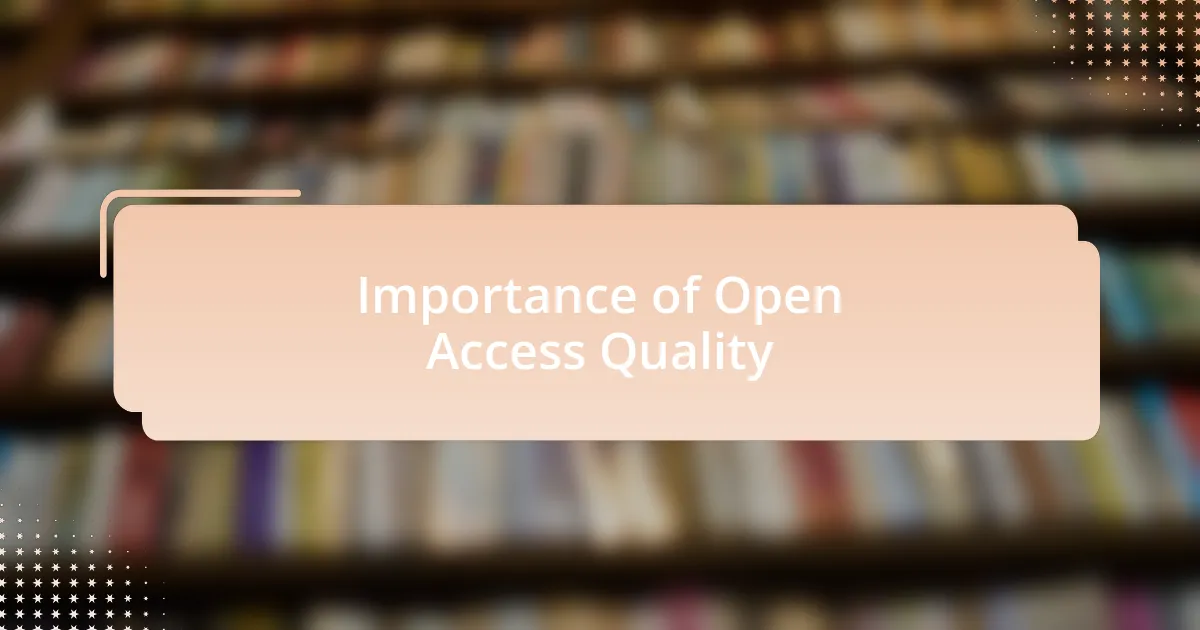
Importance of Open Access Quality
The quality of open access content is vital to ensuring that the wealth of information available is both reliable and meaningful. I recall a time when I came across an intriguing open access article that promised to revolutionize a field I was passionate about. However, after digging deeper, I found it lacked robust peer review. It was a disappointing reminder that not all open access works maintain the same rigorous standards. How are we to enhance our understanding of complex issues if we can’t trust the information we find?
When I assess open access quality, I prioritize transparency and accountability. It’s similar to sourcing ingredients for a favorite recipe; I want to ensure that what I’m using is fresh and credible. This meticulous approach is not just an exercise in filtering information; it impacts the broader research community. Imagine the ripple effect of basing your own research on flawed studies—trust in the work of others is essential, and we owe it to ourselves and future scholars to be discerning.
Furthermore, the importance of open access quality ties directly to the integrity of academic discourse. I’ve engaged in lively discussions about papers I initially thought were solid, only to discover underlying issues upon closer examination. This reality prompts the question: how do we elevate our collective academic experience? By advocating for high standards in open access publishing, we champion an ecosystem that values rigorous research, ultimately benefiting all who contribute to and consume knowledge.
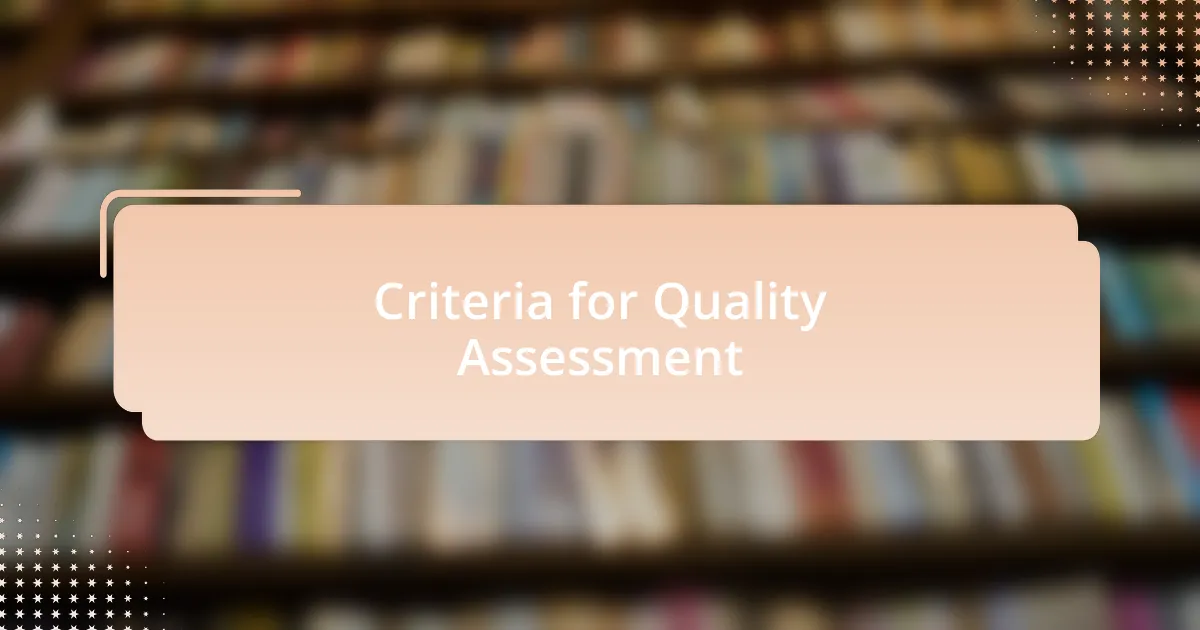
Criteria for Quality Assessment
When I think about assessing the quality of open access publications, I focus on the peer review process. For instance, I once submitted a paper to a journal that promised strict peer review, only to realize later it had published under dubious pretenses. This experience reinforced my belief that a robust peer review system is essential for ensuring credibility; it’s my benchmark for filtering out unreliable sources.
Another critical criterion is the reputation of the journal itself. I often find myself looking at a journal’s editorial board and its indexation in established databases. A few years back, I noticed a new journal gaining traction but found that its editorial board consisted primarily of individuals lacking substantial academic credentials. This raised a red flag for me and highlighted the importance of discerning which platforms are genuinely contributing to the academic dialogue.
Lastly, I consider the impact factor and citation metrics. While these numbers aren’t the entire story, they do offer insight into a journal’s reach and influence. I remember being intrigued by an article in a journal that had low citation rates. After further investigation, I realized it lacked visibility within my academic community, indicating a potential disconnect between the quality of the research and its dissemination. How can we trust our sources without examining their impact in the field? This self-reflection constantly drives my assessment process.
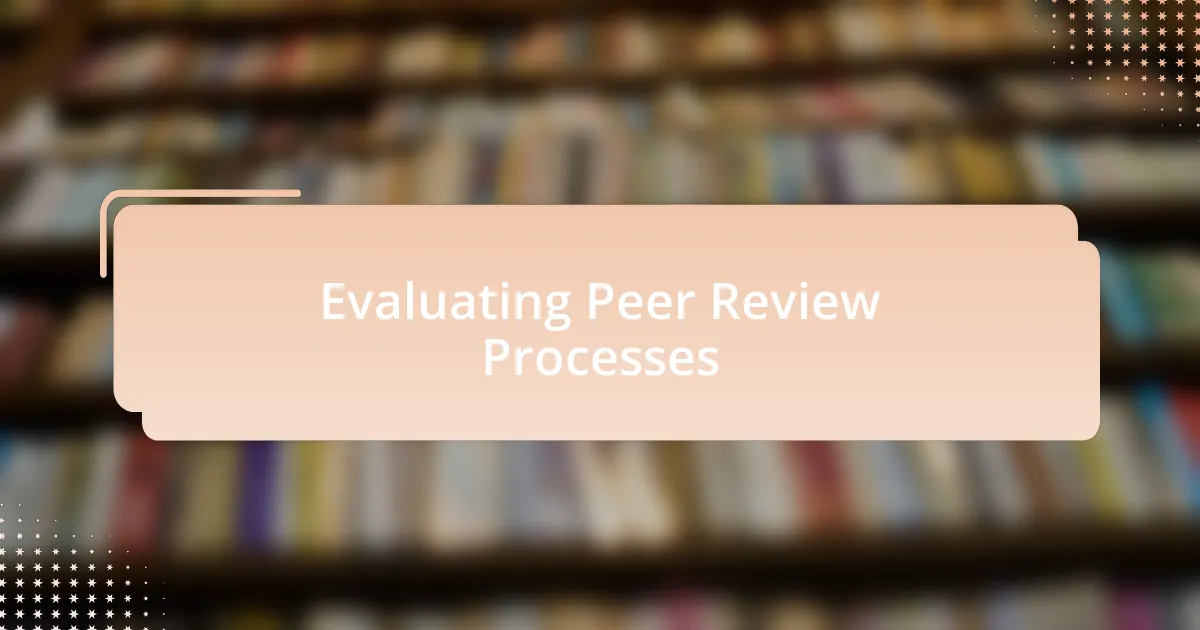
Evaluating Peer Review Processes
When I evaluate peer review processes, I often ask myself, “How transparent is the review procedure?” During one research project, I encountered a journal that graciously provided information about their reviewers and the review timeline. This openness gave me confidence in their dedication to quality control. It made me realize that transparency in peer review isn’t just about ethical practices; it’s about building trust with the academic community.
Another aspect that stands out for me is the nature of the feedback given. I recall submitting an article to a journal where the reviewers offered constructive criticism focused on improving my work rather than just pointing out flaws. This experience emphasized how a thorough review process can facilitate growth for authors. I believe that quality peer review should be a learning opportunity—not just a gatekeeping mechanism.
Additionally, I consider the speed of the peer review process. I once faced an excruciating delay with a journal I had high hopes for. It took nearly a year before I received any feedback. This experience not only tested my patience but also made me question how effectively a journal can evaluate work if it can’t maintain a timely review process. Speed matters—after all, academic research is a continuously evolving field that thrives on timely dialogue.
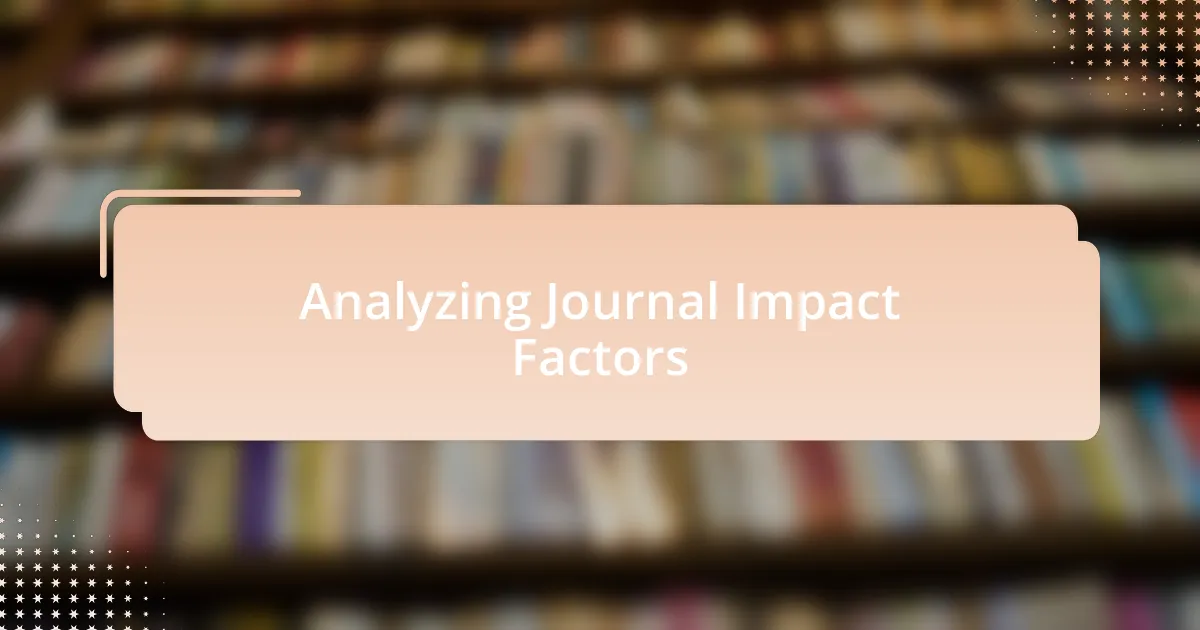
Analyzing Journal Impact Factors
When I assess journal impact factors, I often reflect on how they influence the perception of research quality. I remember a colleague telling me how disheartened they felt when their work was published in a lesser-known journal, despite the rigorous research they had conducted. The emphasis on impact factors can create unnecessary hierarchies in academia, leaving talented researchers feeling undervalued.
Impact factors represent average citations but can be misleading. I’ve noticed that journals in niche fields sometimes have low impact factors, yet their articles are highly relevant and influential within specific communities. This contradiction raises an important question: Are we placing too much weight on metrics rather than the true value of the research being presented?
Moreover, I find myself scrutinizing how impact factors are calculated. During a discussion with peers, I learned that these numbers can be influenced by various external factors, such as the journal’s publication policies and the popularity of its authors. This complexity makes me wonder—are we truly capturing the quality of research, or are we merely chasing numbers?

Personal Experience with Open Access
When I first encountered open access publishing, I felt a mix of excitement and skepticism. A friend of mine had just published her article in an open access journal, and she was thrilled about the potential for wider audience reach. I couldn’t help but wonder, does wider access mean greater quality?
As I delved deeper into the world of open access, I experienced the joy of finding groundbreaking research that might have otherwise remained hidden behind paywalls. One particular piece sparked an innovative idea for my own work. It made me realize that sometimes the most significant contributions to academia come from unexpected sources, raising the question: Are we consolidating knowledge or inadvertently narrowing our scope by relying on traditional access models?
Navigating the quality of open access journals has also been a journey. I recall submitting my own research, only to find the review process was surprisingly swift and thorough for an open access platform. This experience pushed me to consider whether the stigma surrounding these journals might be unjustified. Could it be that open access simply offers a different, yet equally valuable, avenue for scholarly communication?
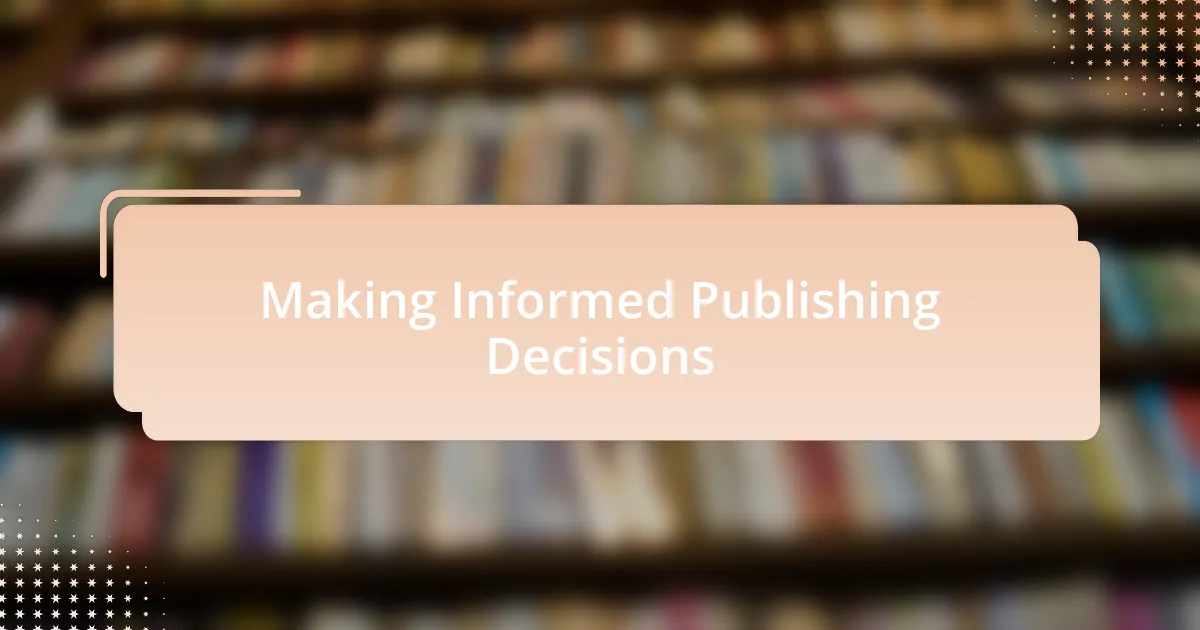
Making Informed Publishing Decisions
Making informed publishing decisions requires careful consideration of several factors. I remember the first time I stumbled across an open access journal that piqued my interest due to its impressive editorial board. It made me rethink how I evaluated research outlets. What if a prestigious-sounding title wasn’t the only sign of quality?
As I navigated further, I began to analyze journal metrics, such as impact factor and citation rates, but I also learned to look beyond the numbers. For instance, I once submitted an article to a journal with a modest impact factor, only to receive detailed, constructive feedback from reviewers that vastly improved my work. This experience highlighted the importance of thoughtful peer review over mere prestige—was I overly focused on superficial accolades in my initial assessments?
I’ve come to believe that community recommendations play a crucial role in making informed choices. Conversations with colleagues often lead me to discover hidden gems in open access publishing. When I discovered a lesser-known journal through a personal recommendation, it changed my perspective completely. How many valuable resources might we overlook when we limit our searches to established names? Being open to exploration has reshaped my approach to publishing, making me a more discerning and thoughtful scholar.